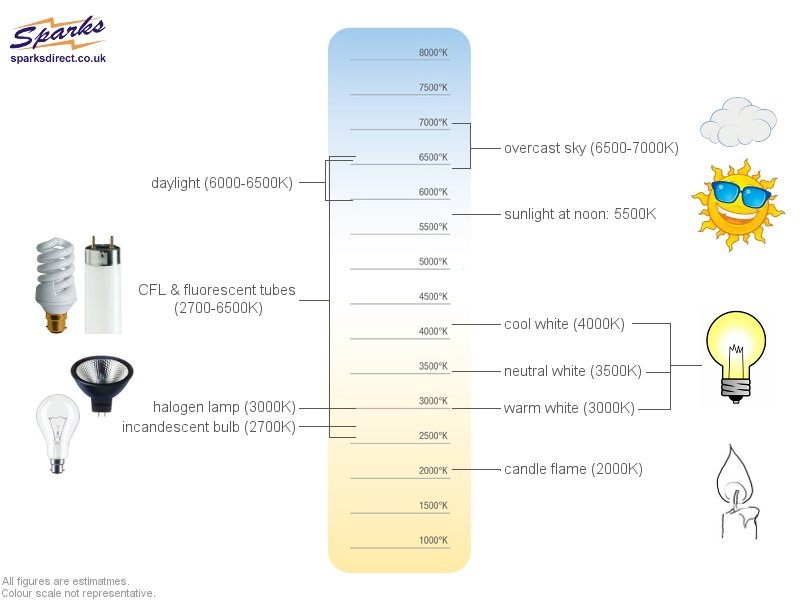This test, due to take place in 2016, will see the space agency swap one of the ISS's existing fluorescent panels with a solid-state lighting module.
The module changes colour from blue to red (with an intermediate white stage), and this will help combat insomnia - which can make depression and illness more likely.
This news is simultaneously the most and least science-fictiony news item we've ever read.
You might be wondering to yourself: how does that work? Well, it turns out colour temperature is a strange thing, but a relatively important one for the body clock.
The Effects of Colour Temperature on Your Body Clock
Colour temperature is based on the heat of an ideal black body radiator at its surface, measured in the SI base unit of thermodynamic temperature: the kelvin (K).If you've ever visited a blacksmith or a glassblower, you might have watched them heat a pair of tongs in the fire. The tongs change colour as they warm up, glowing red at first, then turning white as they get even hotter and eventually into a colour closer to blue
.

The red shades are known as the "warmer" colour temperatures, and the blue shades are the "cooler" ones. It's upside down, and reflects perception more than reality.
Forgive us for stating the obvious, but the sky is blue during the day - please hold your jokes until the end of the post - and studies indicate that light at this colour temperature promotes wakefulness.
The theory goes that over the years humans have evolved to be more alert and awake during the day by producing the hormone melatonin - which wakes us up - when we see that blue light.
That's a simplification; the BBC explains the effect much better than we can. Basically, though: blue light promotes wakefulness, and by reversing that effect, NASA hopes to induce sleep.
Bringing NASA's Ideas Down to Earth
Back down on Earth, domestic lightbulbs are sold in three categories. In order of colour temperature from lowest to highest: we have warm white, neutral white, and cool white.That's the range from ~3000 K to ~6000 K, although individual manufacturers differ. How do we apply NASA's knowledge to the home?
The colour temperature of light fittings has been shown to have measurable effects on the human body.
There must be some people in our readership who have trouble waking up in the mornings.
If you're very imaginative, you might have considered rigging a complicated lighting/timer switch system, but there are easier ways, we think.
Simply install different lights around the house. Neutral and cooler whites could be installed in the bathroom, where the shade might help wake you up.
In the bedroom, warmer fittings might be more useful.
However, there's not much evidence that this will actually work on a grand scale - any effects would likely be minimal, just a little boost to the natural order - and the best way to be awake during the day is just to get enough sleep.
If you're having trouble falling asleep, a GP will be more helpful than this blog post.
What do you think about NASA's plan? Will it work for astronauts who don't usually get the benefit of a normal day-night cycle? Would it work at home?




